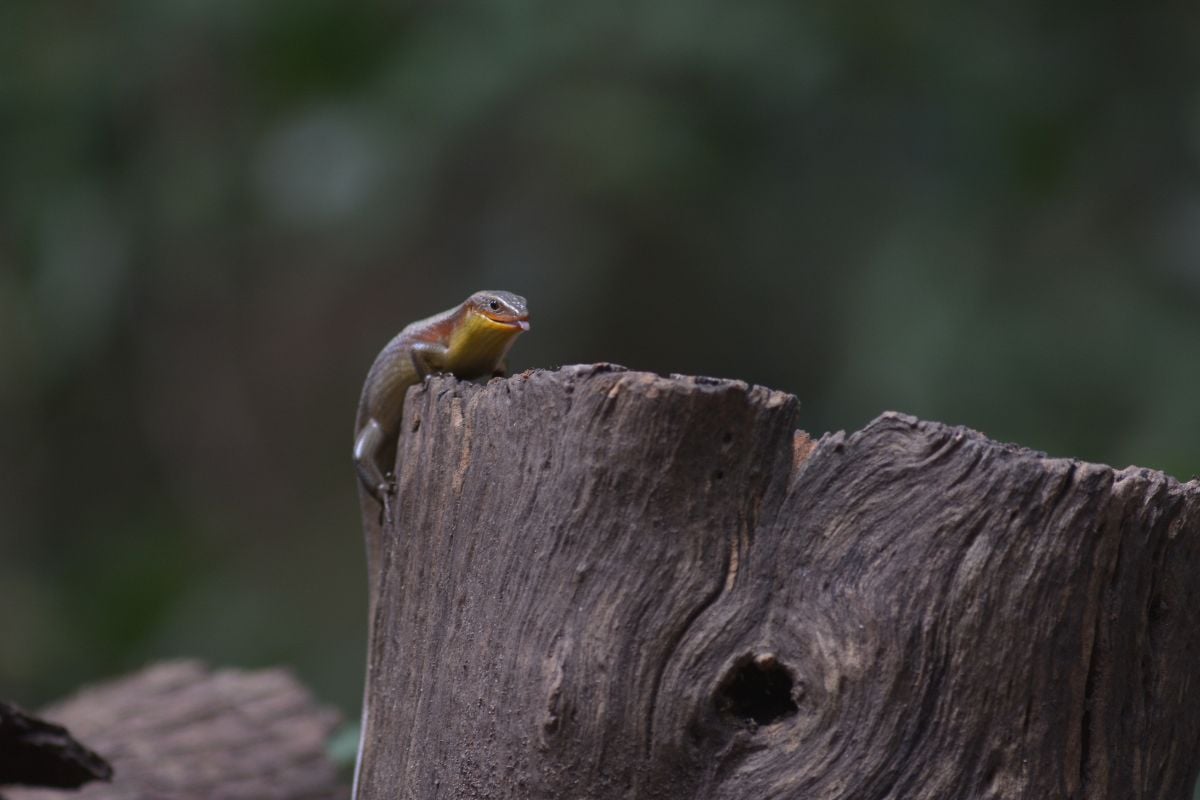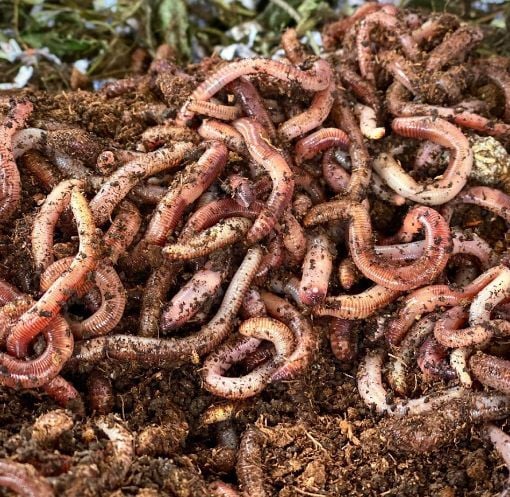The best worm species when it comes to worm composting would be your typical nightcrawlers and red wiggler worms. But if you’re looking for the best worm type to help you well with the decomposition of your organic debris, then turn to the king of all wormery worms – the Red Wigglers. But other than these earth miracle workers, there are other compost worms that work well in the composting scenario.
Epigeic Worms
Epigeic worms are typically used for vermicomposting (such as the Eisenia Fetida for example). They’re the type that likes to settle on top soil (does less burrowing), and likes to eat and live off of organic scraps. They also adapt well when placed inside a worm composting bin or worm bed.
The Blue Worm
Blue worms can also be distinguished as the traveling worm or the the India blue worm. This worm specie is also native to the tropical parts of Asia. Also known as the Perionyx Excavatus, the blue worm can also grow for as long as 1 ¼ to 2 ¾ inches in length. These crawlers also prefer to be in warmer temperatures that range from 70 to 80 degrees Fahrenheit. You can expect for these worms to also reach the adult stage between a 3 to 5 week timeframe.
The African Nightcrawler
Also known as Eudrilus Eugeniae, the African Nightcrawler is a tropical worm. It can stand higher temperatures provided that they are given with enough moisture (this only means that African Nightcrawlers will not be able to stand temperatures that drop to 45 degrees Fahrenheit). They certainly work well under damp and temperate conditions.
The Alabama or Georgia Jumper
Native to tropical Asia, the Alabama/Georgia Jumper (also referred to as the Amynthas Gracilis) works well when used for composting in areas that are tropical and subtropical. Other than that, this large worm specie can grow for as long as 4 to 6 inches in length. It can also stand temperatures ranging from 45 to 90 degrees Fahrenheit (but these jumpers usually prefer temperatures that are well under 70 to 80).
The Red Wiggler Worm
One of the best worm species would be the red wiggler worms (also known as the Eisenia Fetida). They have been recognized as the worm specie that can eat as much as half of its weight on a daily basis. They’re also the type that works efficiently in breaking down decaying natural remains; and turning these scraps into high-quality organic compost. So not only are they popular with producing worm castings rapidly, they’ve also been acknowledged as the very prolific kind (composting worms such as these red worms love to mate especially during warm conditions). Aside from that, worms in this form can grow for as long as 1 to 5 inches in length, and ¼ inch thick.
Uncle Jim’s recommends the 500 Red Wigglers
Did you know that you can still use the scraps from your kitchen or yard, and have these turned into a free source of organic fertilizer? With the help of 500 Red Wigglers, you can! Not only are they voracious eaters, they’re also the best kind of gardeners. Use these worms to your advantage by ordering 500 of them today (guaranteed live, and insect/mite free)!
To know more about the product, check the 500 Red Wigglers here.









11 thoughts on “The Best Worm Species for Vermicomposting”
I’m need night crawlers
Hi, thank you for the info. working on big research project.
God bless
Best worm for a worm septic tank for small house in Puerto Rico. Temps get up to mid to high 80’s. Any tips or advice is welcome. Thank you!
Hello Michael;
Though some have succeeded in using Red Wigglers for human waste, the Tubifex worms are more suitable for this job. It is difficult to get the Red Worms acclimated and adjusted to the environment of human and animal waste.
Uncle Jim’s
Is it normal to see Blue earth worms in Iowa?
I am also finding Blue worms in central Mississippi. ??? Wonder what is up?
I am an earthworm cultivator, and every month I produce 5 tons of earthworms.
is it possible that I can sell my cultivation to you.
I tried the red wiggler worms on my pile of spent brewery grains (home brewer, here), but they all died. I’m sure I should have kept the pile more moist, and it wasn’t due to any quality issues with the worms. Are these things recommended for composting spent brewery grains? I’m going to try again since the pile is growing. Thanks.
Which species can tolerate the highest temperature? I am looking for worms for my garden tower in St Pete Beach, Florida where summers are mostly in the 80s and 90s F
If you’re going to sell a specific worm, you should give THAT specific worm species… not another, more invasive, and definitely NOT a composting worm as a bonus/mistake. I need a full refund, or a new set of Red Wrigglers and European Nightcrawlers.
Please I need to vontact with sales to supply worm as requested